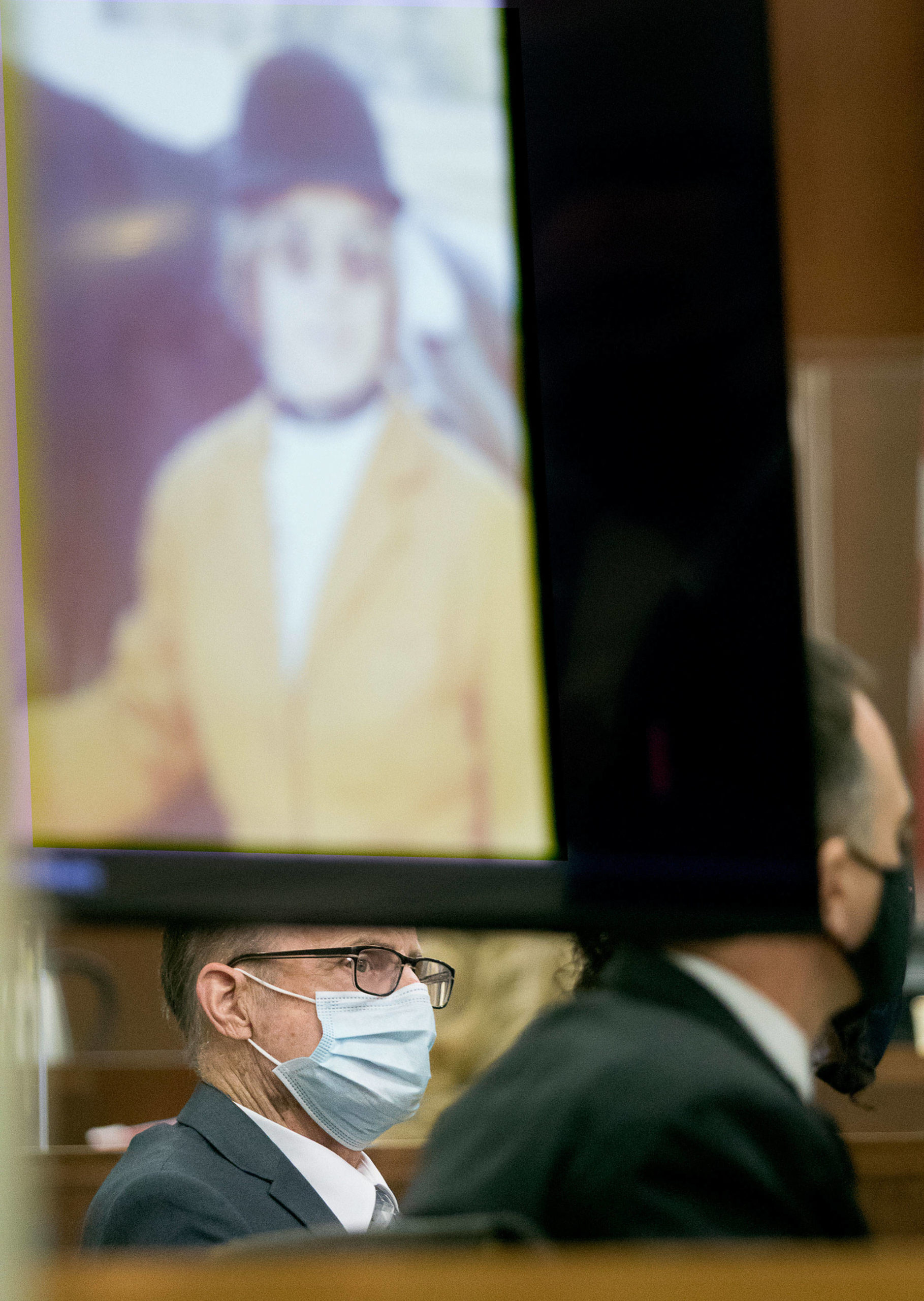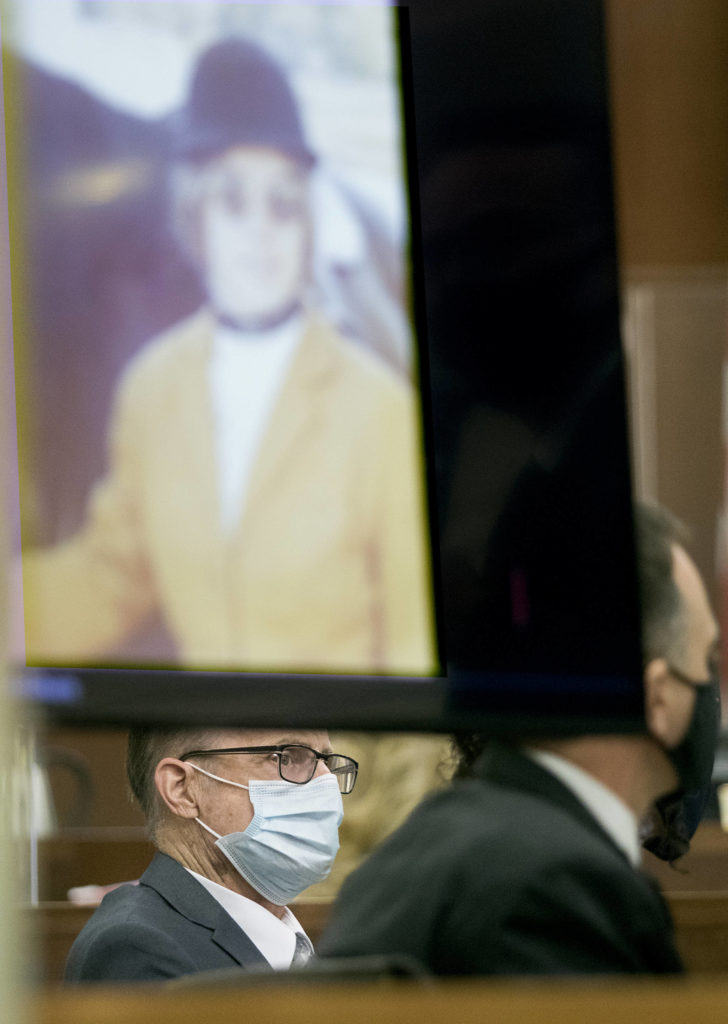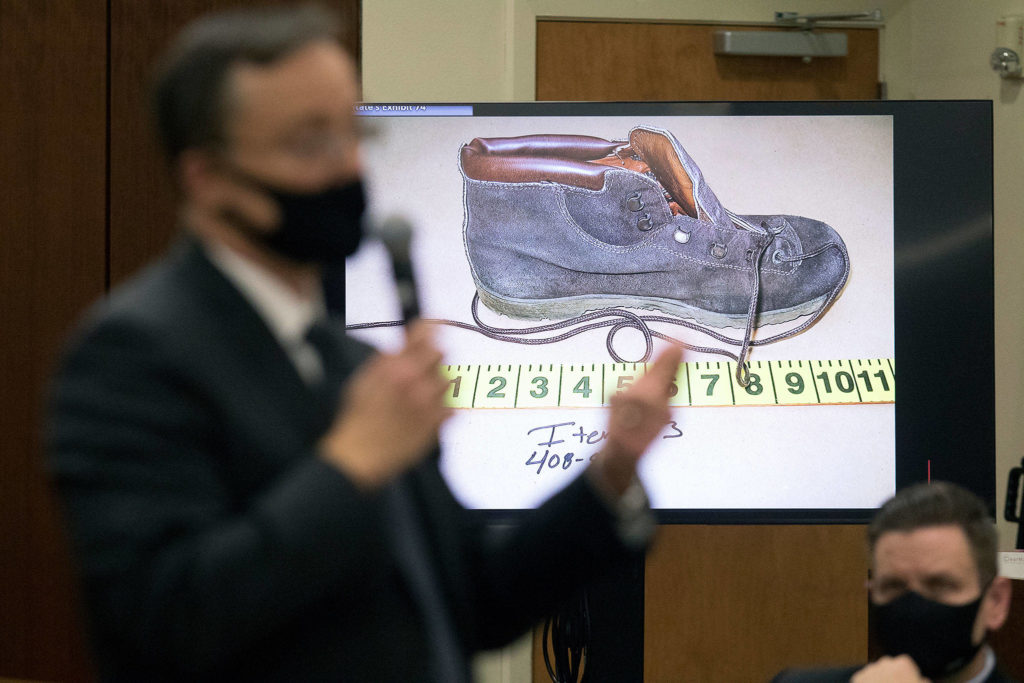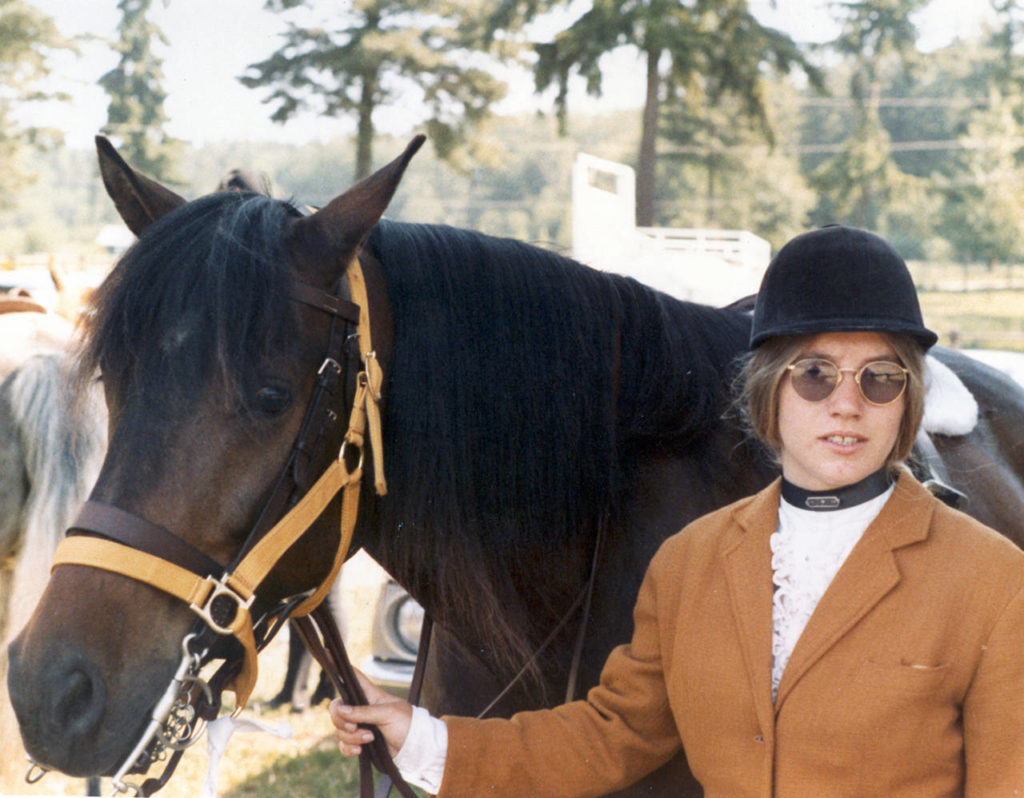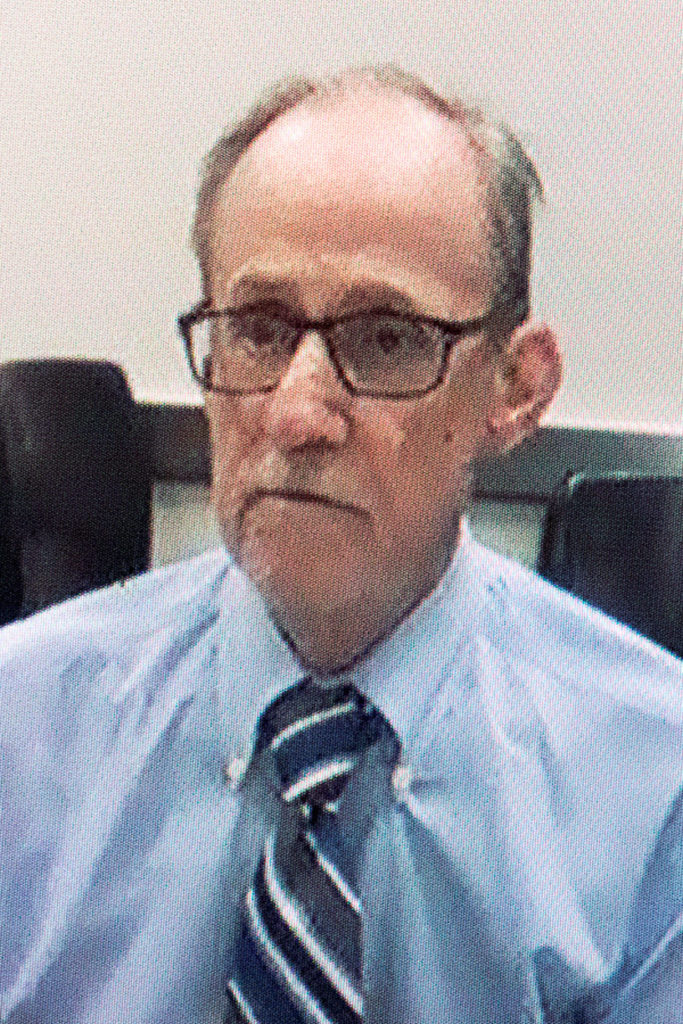EVERETT — It was a different world in 1972.
The strip malls and subdivisions we now call Mill Creek were not even blueprints. It was all evergreens and farmland then, deputy prosecutor Craig Matheson explained to a jury Monday.
A dirt track led into the woods off Penny Creek Road. Around 5:30 p.m. on Aug. 23, 1972, a couple drove up the shadowy road to do some target shooting. A fallen tree blocked their path. As they got out to move the obstacle, they found a woman dying from a gunshot to the head.
Jody Loomis, 20, clutched her exposed bra. She wore almost nothing but knee-high socks and dark boots with chunky waffle soles. She had been shot above her right ear with a .22-caliber pistol. Loomis was alive but could not speak. The couple raced her to Stevens Hospital, now Swedish Edmonds.
She was pronounced dead on arrival. The homicide went unsolved for decades.
On Monday afternoon, attorneys made opening statements in the trial of Terrence Miller, now 78, who is charged in Snohomish County Superior Court with first-degree murder for a crime committed 48 years ago.
At the time of Loomis’ death, Miller was 30.
Snohomish County sheriff’s detectives arrested Miller in 2019. He had been identified through forensic genealogy, an investigative tool that combines crime scene DNA evidence with the power of genetic genealogy databases. In this case, it was DNA from semen left behind on one of Loomis’ boots.
“He did not know Jody Loomis,” the prosecutor said. “He did not date her. … This sperm should not be on her boot.”
The same technique helped police in California to find and convict the Golden State Killer. Last year, Snohomish County prosecutors won the first-ever jury conviction in the world in a case solved with forensic genealogy when William Talbott II was found guilty of murdering a young Canadian couple in November 1987.
That pioneering trial was covered by The New York Times, the CBC, the radio program “Reveal,” the true crime show “Forensic Files” and many others.
In both cases, detectives confirmed the findings of a genealogist by putting the suspect under surveillance, waiting for him to dispose of a paper cup in a public place and comparing the genetic profile with that of semen from the crime scene.
Miller’s trial opened Monday in the same courtroom in the Snohomish County Courthouse, with Judge David Kurtz presiding. A few family members attended, having waited almost five decades for justice.
Defense attorney Frederic Moll acknowledged to the jury that Miller’s DNA was recovered from one of the boots. But he pointed out that deputies failed to wear gloves at the autopsy, that evidence was lost and mishandled over the years, and that the boot itself was contaminated with a lab worker’s DNA.
“This case is as much a mystery now as it was in 1972,” Moll said. “And how do we know that? Because while they found Mr. Miller’s DNA on that shoe, that’s no proof that he killed Jody Loomis, and you can’t build a puzzle with only one piece.”
Jurors will be left with too many questions at the end of the trial, he said. The most important question, he said, will be: “Who killed Jody Loomis?”
“Because it wasn’t Mr. Miller,” Moll said.
Loomis lived on Winesap Road with her parents, John and Rosemary, her 12-year-old sister, Jana, and her fiancé, Jim Roberts. She kept her horse, Saudi, at a stable about 6 miles northeast, along Strumme Road.
Loomis was “entirely a creature of her time,” and there was “a bit of a counterculture to her attitude, a little bit of hippy sensibility to her,” Matheson told the jury. In a portrait shown in court — where she’s standing in English riding clothes, gripping the bridle of a dark horse — she wore the kind of round glasses you might associate with John Lennon.
Loomis was a small person. She stood under 5 feet, tiny enough to fit into her preteen sister’s shoes. She borrowed the size 5½ boots that afternoon.
Usually, her parents dropped her off at the stable. This was the first time she decided to pedal there on her 10-speed bike. The dirt road off Penny Creek is near the midpoint of that trip.
An autopsy suggested Loomis was getting dressed when the shooter stood behind her and fired at a downward angle, like an execution.
Prosecutors listed 27 witnesses whose testimony could be put in front of the jury: eight detectives, retired police officers, forensic scientists and people who knew Loomis. Two of those witnesses have died, including the man who found her in the woods. His deposition was recorded as Miller awaited trial.
It’s a trial taking place in the midst of a pandemic. Jury selection was held last week in a spacious room of the Drewel Building, with dozens of potential jurors wearing clear masks and speaking into a microphone, to better keep their distance.
Miller arrived in court Monday in a blue, three-ply mask, a silver-and-white striped tie and a loose, dark gray suit, over a white button-down dress shirt.
The jury was sworn in around 1:15 p.m., seated with distance between them in the gallery where the public typically sits.
At the time of his arrest, Miller and his wife of over 40 years ran a ceramics shop out of their home in Edmonds. In a phone call recorded from jail, Miller apologized to his wife for ruining her life and told her “things would not turn out well for him,” Matheson told the jury. Miller also told friends and family the evidence was strong and he expected to go to prison.
“As you listen to those statements,” Moll countered, “I ask you to keep in mind the context in which they were made.”
The trial is being streamed live on an official court YouTube channel. Witness testimony is expected to begin Tuesday morning.
Caleb Hutton: 425-339-3454; chutton@heraldnet.com. Twitter: @snocaleb.
Talk to us
> Give us your news tips.
> Send us a letter to the editor.
> More Herald contact information.
